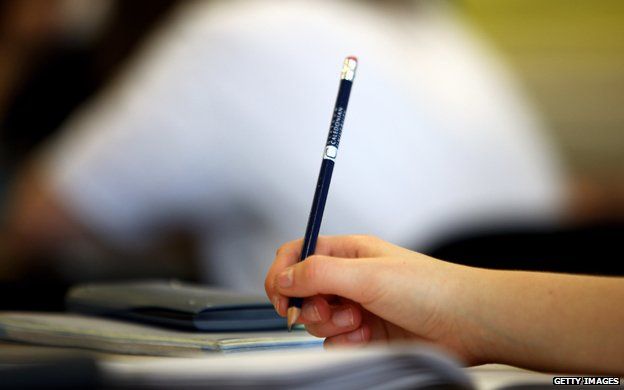Learning the facts about learning
- Published
- comments

School uniforms instil discipline and improve performance. Streaming pupils gets better results. Teaching assistants take the strain off hard-working teachers and help children learn. Wrong. Wrong. Wrong.
New government-commissioned research into "what works" suggests many of the approaches we think make a difference are either a waste of money or may make matters worse.
Uniform policy? NO.
Schools that don't force pupils into blazers and ties are almost unheard of these days. But the best evidence is that a uniform policy makes no difference to attainment. If anything, it holds students back.
Setting and streaming? NO.
Dividing pupils into classes of different abilities is a popular approach to improving standards, but research suggests that it leaves students a month behind those in mixed groups.
Teaching assistants? NO.
Research suggests students in a class with a TA do not, on average, perform better than those in a class with only a teacher.
Longer lessons (block scheduling, in the jargon )? NO.
The evidence is double-chemistry and triple-maths don't make for more accomplished chemists and mathematicians.
Repeating a year? NO.
Giving pupils a chance to repeat a year if they are struggling is not only very expensive - on average, it leaves children four months behind.
Surprised? These are the findings of intensive analysis of data from across the world, part-funded by the Department for Education as part of the What Works Network, and recently published by the government.
So what does work?
Meta-cognition and self-regulation? YES.
"What on earth is meta-cognition and self-regulation?" I hear some ask. It is hardly the chant at the school gates. But that phrase reflects the most effective way to improve educational outcomes, according to the evidence.
Meta-cognition is often described as "learning to learn" and what it means is giving children a range of strategies they can use to monitor and improve their own academic development. Self-regulation is developing the ability to motivate oneself to learn.
On average, introducing meta-cognition and self-regulation into the classroom has a high impact, with pupils making an average of eight months' additional progress. That is a phenomenal improvement.
Feedback? YES.
Feedback is information given to pupils about how they are doing against their learning goals. In the workplace it might be part of an appraisal, and the evidence is that a similar approach works wonders in the classroom, increasing educational attainment by around eight months.
Peer-tutoring? YES.
If pupils work together in pairs or small groups to give each other explicit teaching support, the results can be dramatic - particularly with youngsters who struggle the most. This isn't about doing away with teachers, but it seems when working with their peers, children tend to take real responsibility for their teaching and their own learning.
Sometimes the tutoring can be reciprocal, with pupils alternating as tutor and tutee. Cross-age tutoring also has advantages for older and younger participants, it turns out. This intervention, on average, improves student performance by a GCSE grade.
One-to-one adult tutoring is, counter-intuitively, less effective and much more expensive than peer tutoring.
Homework in primary school doesn't make a lot of difference, nor does mentoring, performance pay for teachers, or the physical environment of the school.
Given all this evidence, it appears our debate about school standards is obsessed with the wrong things. We need to teach our children how to learn and give them more opportunity to learn from each other.
This government declares its commitment to evidence-based policies, so one must assume that the results of research it helped initiate will be disseminated to every head teacher in the land.